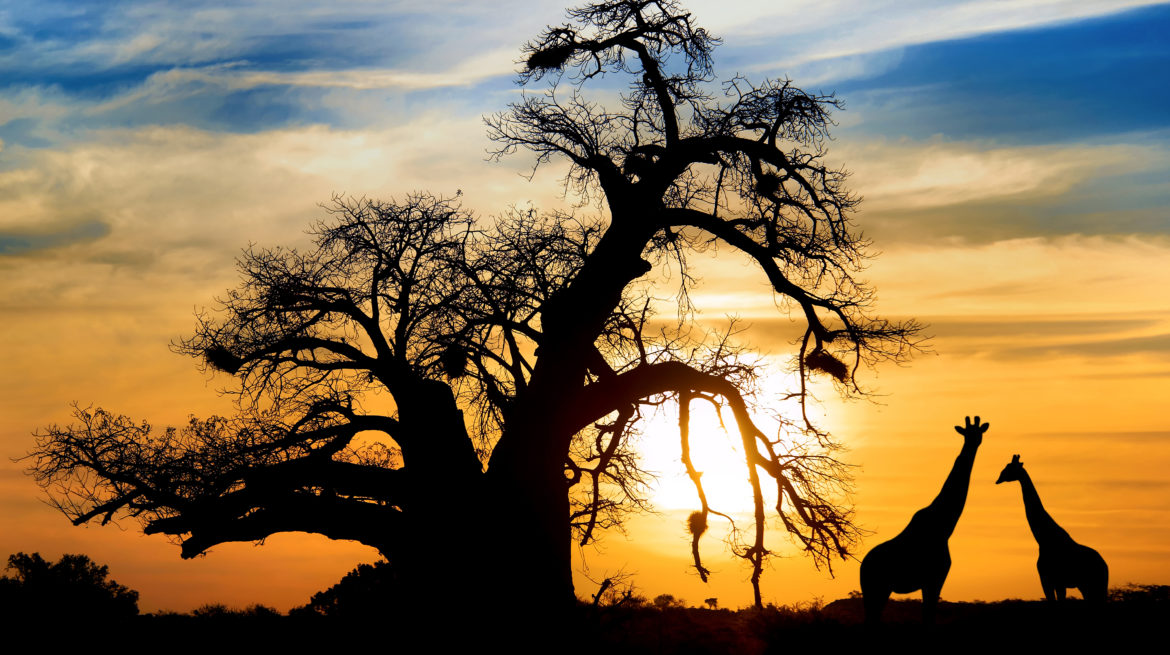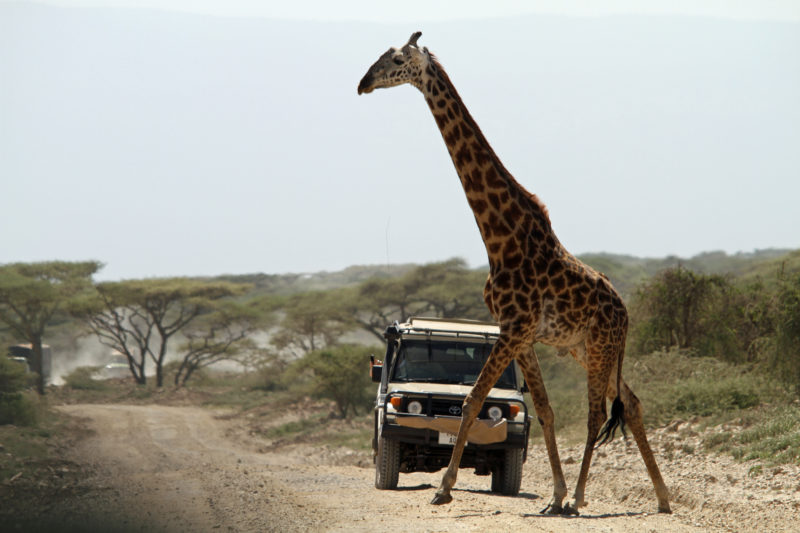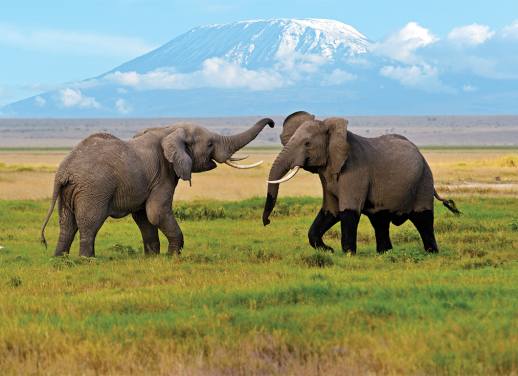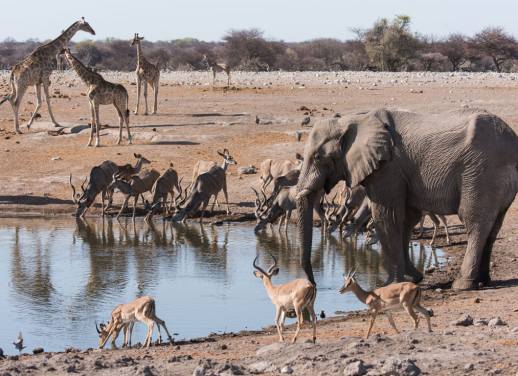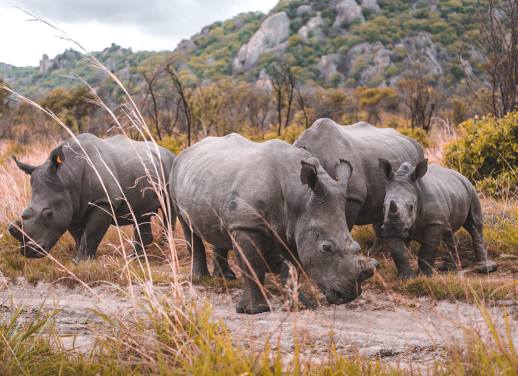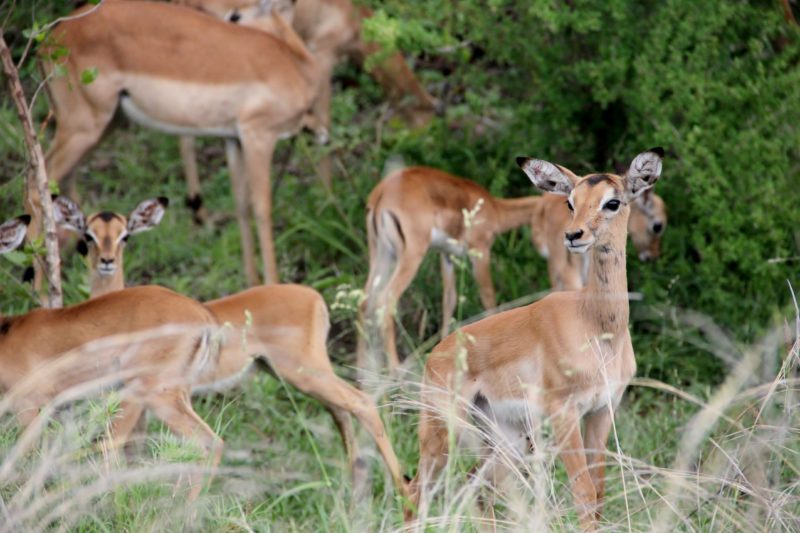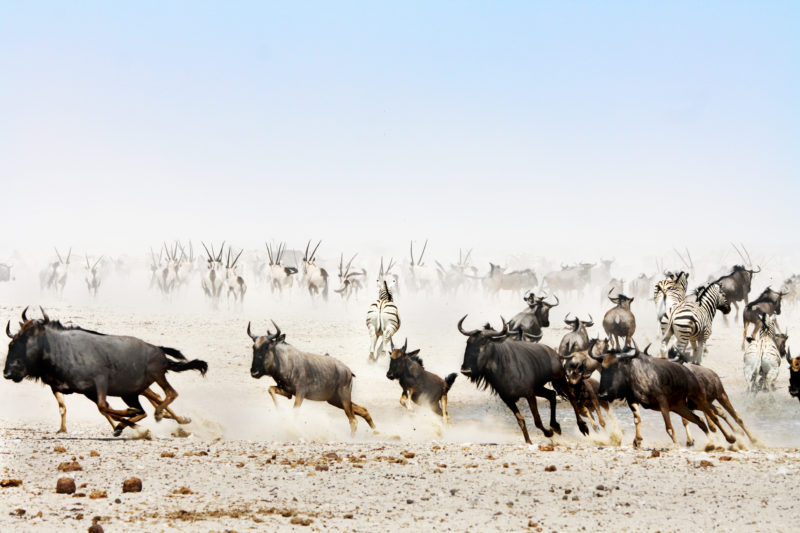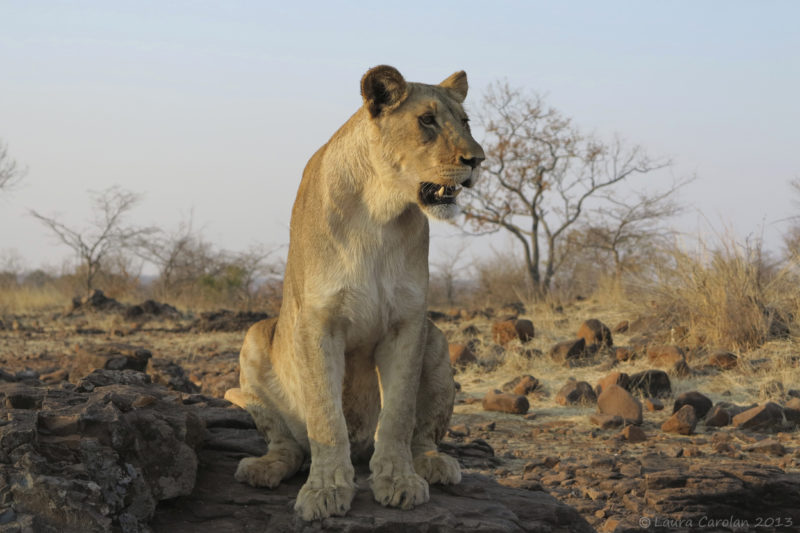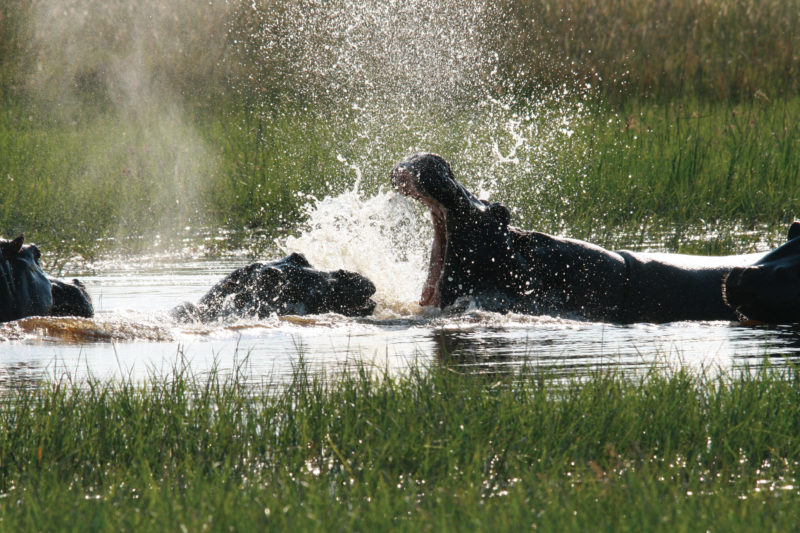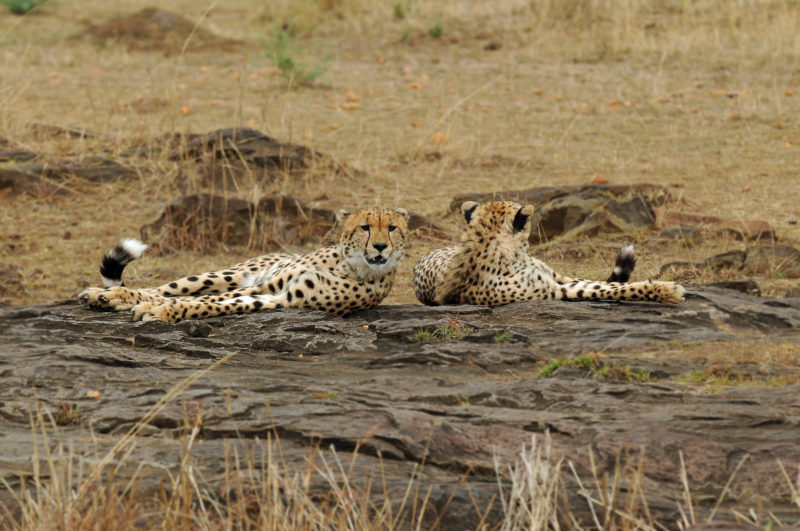An African safari is the ultimate bucket list trip, so you want to make sure you go at the right time.
The journey will take you across vast, ever-changing landscapes and give you an up-close look at some of the world’s most beautiful animals in their natural environment. You’ll probably want to pack your bags as soon as you start imagining the awesome journey, but a little planning ahead of time can make your trip that little bit more magical.
When is the best time for a safari in Africa?
The best time to go on safari is between June and October, during the dry season. This is a cooler time of the year and you are more likely to see animals, who are searching for water sources. During these months, you can also catch the iconic Masai Mara migration.
Here is a breakdown of some of the best countries to visit, when to go, and the perfect trips for you.
Safaris from January to February
Tanzania
The Great Migration of wildebeests from Tanzania’s Serengeti to Kenya’s Masai Mara is awe-inspiring, to say the least. The precise timing of it is dependent upon rainfall patterns each year, meaning you can see different aspects of it at different times: the mass birthing of calves between January and March in the southern Serengeti, and river crossings between July and August.
In addition to wildebeests, safari-goers will also have the chance to spot Africa’s most famous predator, lions. Prides of lions will follow the herds for the prime hunting opportunity they present. Cheetahs, wild dogs and hyenas also make appearances as they try to take down vulnerable members of the herd. If you’re lucky, you might even see a wildebeest or zebra giving birth.
Read more: 7 reasons why your next adventure should be in Tanzania
Tip from Intrepid’s Africa Product Manager, Jenny:
Have an open mind! A lot of travelers have this unrealistic expectation of seeing river crossings with thousands and thousands of wildebeest (and the odd crocodile) battling it out in the ultimate scene from National Geographic! The migration is a natural phenomenon and no year is the same as the last. That being said, it is magical!
Safaris from March to April
South Africa
South Africa is pretty much your one stop shop for everything a good African holiday is made of. It’s also incredibly good value. Consider heading there in March and April for pleasant weather and fewer crowds. These two summer months fall in the country’s wet season, but the rains really do open the door to some of the best wildlife-spotting opportunities.
Kruger National Park, the region’s most famous National Park, not only has the big five (and more!), but is also close to the vibrant, underrated city of Johannesburg.
Read more: 6 reasons why South Africa is a destination with something for everyone
But any time is a good time to visit South Africa. Cape Town offers food, wine, shopping, dreamy views, and activities for all ages. Just outside it lies the popular wine region, located on the Western Cape. You simply can’t go wrong!
Tip from Intrepid’s Africa Product Manager, Jenny:
If you don’t want to sit in a vehicle all day, our exciting new active itinerary is a great shout. It’s a 9-day cycling and hiking trip through South Africa, and lets you hike Table Mountain, bike through Stellenbosh winery region, and so much more.
Ethiopia
The weather is fairly temperate throughout the entire year here so visiting in any season is an option, but it’s a little rainier from June to September. A few months before this time is hot, but not too hot.
The Simien Mountains National Park, a UNESCO World Heritage Site, is one of the best places to go on a safari adventure. The park’s sweeping mountains and deep valleys, the result of erosive activity, are covered in the deep green of alpine forests. Animals living in the park include caracals, leopards, jackals, hyenas, bushbucks, klipspringers and hundreds of species of birds. Safari-goers might also glimpse the rate Simien fox or Walia ibex.
Fall in love with Ethiopia on this amazing 15-day trip or explore our range of small group adventures in Ethiopia.
Namibia
The wildlife viewing opportunities in the desert-filled country of Namibia might surprise (and delight) you. Many different African animals have adapted to live in the harsh-but-beautiful Namib, a coastal desert. Herds of elephants traverse the desert, as do different types of antelope, zebra and even lions. Outside the desert, March can be humid and rainy, but April tends to be drier. The rains that fall early in the year make much of the country verdant in April.
Travel from Vic Falls to Cape Town and discover the highlights of Namibia
Safaris from May to June
Madagascar
May and June are winter months in Madagascar, but the island’s proximity to the equator means pleasant temperatures during the coolest months of the year. You’ll also see particularly lush landscapes in May and June, and these two months are considered part of the low season; there won’t be throngs of tourists.
Read more: 8 reasons why Madagascar should be on your bucket list
For the daring traveler who craves unique experiences, Madagascar is an essential destination. The island is rich in wildlife with hundreds of species of birds, reptiles, amphibians and mammals. The majority of the flora and fauna in Madagascar are endemic – they live naturally nowhere else in the entire world. Take a safari to glimpse lemurs swinging through the trees and the masters of disguise, chameleons.
Experience the undiscovered island of Madagascar on this magical 16-day trip or check out our full range of Madagascar adventures
Zimbabwe
In Zimbabwe, May is a transitional month with elements of both wet and dry seasons. The recent rains leave the land looking lush and green, but as the month progresses the weather becomes drier and the nighttime temperatures begin to drop. Come June, the days are warm and pleasant, while the nights are chilly. This time of year is the peak season for safaris. The drier weather draws animals to the country’s rivers and watering holes. Keep a lookout for lions, leopards, rhinos, zebras, elephants and more.
Read more: Here’s why you should visit Victoria Falls
Safaris from July to August
Rwanda
July and August are right in the midst of Rwanda’s dry season (which takes place from June through to September). These two months are very popular for booking gorilla trekking adventures because of the clear skies and sunny conditions. The gorillas live in Rwanda’s rainforests, mainly within the bounds of Volcanoes National Park. Here, you can also see chimpanzees and colobus monkeys living among the trees. Keep in mind that gorilla habitat is, by default, very wet and you can’t avoid rain completely. However, after heavy rain, the skies often open up to bright sunshine.
The permits are a flat price year round and just last week got hiked up from $750 USD to $1500 USD effective immediately. Luckily, Intrepid has pre-purchased permits on our group trips which means we are able to honor existing 2017 prices. So, when is the best time to go? Now, before it gets too expensive!
Go gorilla trekking in Rwanda (and so much more!) on this epic 16-day trip
Botswana
The Okavango Delta, Moremi and Chobe are among Botswana’s most popular parks and animal-spotting destinations. The best time to visit them is from May to September, during the dry season and winter, which results in more moderate temperatures.
Photo essay: What it’s really like on an Intrepid safari in Botswana
There is also less vegetation during these months, so animals tend to concentrate around waterholes and rivers, making wildlife easier to spot. The Okavango Delta is also in full flood then. The skies are clear, rain is rare and there are fewer mosquitoes. It does get cold at night and in the mornings, so packing warm winter clothing during June, July and August for the cold morning game drives is advisable.
Check out the highlights of Botswana on this life-changing 9-day trip or explore our range of Botswana adventures
Safaris from September to October
Ghana
There is some light rainfall in September and October, but these two months are still part of the dry season in Ghana. You won’t have to worry about heavy rains causing flooding or travel delays. Birdwatchers will love taking a canopy tour through Kakum National Park – you can spot guinea fowl, African grey parrots and many other types of birds flitting through the trees. The national park is also home to forest elephants, civets, leopards, pangolins, a variety of monkeys and more.
Other wildlife hotspots include the Ankasa Rain Forest, the Wechiau Hippo Sanctuary and Mole National Park.
See West Africa’s wildlife on this awe-inspiring 21-day trip through Ghana, Togo and Benin
Kenya
With more than 40 national parks and reserves, Kenya is a dream destination for safaris. This country draws tourists year-round, but September and October have certain advantages. These months are part of the dry season and the weather is also cooler. During these months, you can also catch the iconic Masai Mara migration (guide here). The mass movement of these animals will attract larger predators, including lions.
Visit some of Kenya’s finest game parks (and see the Big 5) on this 8-day adventure or check out our full range of Kenya adventures
Eswatini
September heralds the beginning of springtime in Eswatini, a fairly dry time of year. Hlane Royal National Park and Mkhaya Game Reserve are ideal destinations for safari-goers who want to get close to animals like elephants, rhinos, buffalo, leopards and lions. In addition to these big mammals, Eswatini is also home to zebras, a variety of antelope, giraffes, hundreds of bird species and more.
Hit up Eswatini’s wonders (and South Africa) on this 9-day ‘Kruger and Coast’ trip
Safaris from November to December
Ivory Coast
November and December are the first two months of the warm and dry season in Ivory Coast. The temperate weather and minimal rainfall are ideal for travelers. And Taï National Park, a UNESCO World Heritage Site, is perfect for wildlife seekers. The park protects a tropical rainforest and its inhabitants include chimpanzees, pygmy hippos, leopards, colobus monkeys, flying squirrels, two species of bat, a variety of birds and much more.
This epic 28-day trip covers four countries in West Africa (the beautiful Ivory Coast included)
Uganda
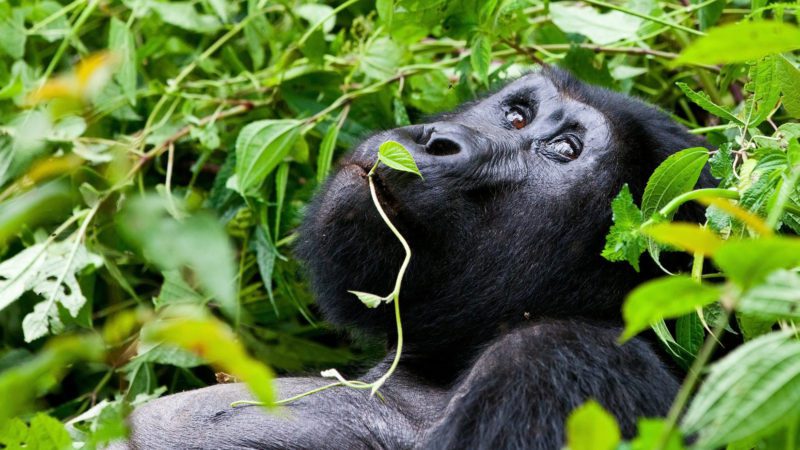 Let’s face it, who doesn’t want to go mountain gorilla trekking in Uganda? If you do, it’s probably worth heading to Bwindi Impenetrable National Park, a rainforest that nearly half of the world’s mountain gorilla population calls home. The peak period to travel tends to be June through to September when skies are clear, there is less rain and more sunshine. BUT traveling in the low season of November is a great opportunity to make the most of competitive prices, including permits which are almost half the price. (Permits in Uganda are seasonal, as opposed to Rwanda’s year-round flat-price ones.)
Let’s face it, who doesn’t want to go mountain gorilla trekking in Uganda? If you do, it’s probably worth heading to Bwindi Impenetrable National Park, a rainforest that nearly half of the world’s mountain gorilla population calls home. The peak period to travel tends to be June through to September when skies are clear, there is less rain and more sunshine. BUT traveling in the low season of November is a great opportunity to make the most of competitive prices, including permits which are almost half the price. (Permits in Uganda are seasonal, as opposed to Rwanda’s year-round flat-price ones.)
This low season also takes place in March and April and the pay-off is well worth it. Why? Well, as Jenny, Intrepid’s Africa Product Manager puts it, “Without the crowds you could find yourself trekking the gorillas with as little as 2 or 3 other people”. She adds that “it’s unlikely to rain all day. You’ll get a downpour at some stage each day, or even light rain on and off, but there are plenty of blue sky days as well.”
Explore the Ugandan rainforest and more on this incredible 21-day trip. Or, if you’re pressed for time, check out this 4-day gorilla short break in Uganda.
A note on the rainy season: don’t dismiss it!
Generally distinguished as the low season in Africa, the ‘green season’ is characterized by frequent rains. It’s a great option for travelers who can live with a bit of rain, and a bit more of a challenge when it comes to animal spotting. The vegetation is thick, and the grass high making wildlife harder to spot, and water is plenty so you don’t get a lot of animals congregating around waterholes.
What you do get is incredible, lush, green landscapes. Most animals give birth at the beginning of the rainy season so you will see plenty of newborns. It’s also a bird lover’s paradise with flowers in bloom and many migratory birds arriving back in the area from as far as Asia or Europe. The Serengeti and Masai Mara may be home to the world’s largest annual migration but green season Botswana hosts part of the longest recorded migration! Thousands of Burchell’s zebras cover more than 500km in a straight line across Namibia and Botswana.
It really is a great option for those second-time visitors to Africa who have been there, done that, seen the Big 5 and want to experience something ‘different’. Some destinations like Botswana in particular look like an entirely different place from one season to the other and it’s pretty amazing to see both ends of the spectrum, and you can get some incredible savings for traveling at this time of year. For example, travel on our new Okavango Delta Fly-in Safari in low season and you could be saving yourself about $1500 USD per person (as opposed to high season).
—
Ready to explore Africa on safari? Check out our wide range of small group trips.

